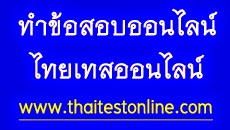| 1. 5.36 What is the most informative source of information about the hazards of a product or chemical? |
| 2. 5.30 What is the main component of inert gas used on crude oil vessels? |
| 3. 5.89 When working in an area where peronal monitors indicate the presence of hydrogen sulfide you must wear SCBA |
| 4. 5.77 What are the characteristics of hydrogen sulfide? |
| 5. 5.37 Who can supply an SDS? |
| 6. 5.51 What does an explosimeter (explosion meter) measure? |
| 7. 5.55 Which of the following conditions can cause false readings on an explosion meter? |
| 8. 5.69 Hydrogen sulfide may be present in all petroleum products, crude oil and many types of petrochemicals. |
| 9. 5.53 What does an oxygen meter measure? |
| 10. 5.43 What defines a confined space? |
| 11. 5.15 Which of the following is defined as a corrosive liquid? |
| 12. 5.45 According to the International Safety Guide for Oil Tankers and Terminals (ISGOTT), for a tank to be safe for entry, what should the reading on a combustible gas detector be? |
| 13. 5.44 Before entering a confined space, which tests are required? |
| 14. 5.62 Which of the following statements are correct, when working with benzene? |
| 15. 5.20 To find out if a material is hazardous, you must consult the SDS. |
| 16. 5.72 What is the most hazardous component of many crude oils? |
| 17. 5.28 Why is it important to wear gloves while sampling? |
| 18. 5.32 Why should pumping be suspended when first-in or first-foot samples are taken? |
| 19. 5.27 What can help prevent a build-up and/or discharge of static electricity when sampling? |
| 20. 5.90 The Short Term Exposure Limit (STEL) defines exposure to a substance over how long? |
| 21. 5.47 Someone must always stand watch at the entrance to the confined space while you are in it. |
| 22. 5.11 Portable electronic measurement equipment must be _______ immediately before gauging? |
| 23. 5.87 Ladders, planks, and scaffold boards should not be used as walkways (i.e. when boarding vessels, moving between barges, etc.) |
| 24. 5.73 When working in an environment suspected of containing H2S what is the only effective protection? |
| 25. 5.24 As you enter a bunded/fire wall area to sample a fuel oil tank, you begin to feel dizzy. What action should you take? |
| 26. 5.61 When working with benzene, in addition to a respirator, hard hat and safety footwear, what other personal protective equipment should be worn? |
| 27. 5.22 When using a metal tape to gauge a tank, the tape should always stay in contact with the gauge hatch. |
| 28. 5.66 What is the appearance and characteristic odour of benzene? |
| 29. 5.76 Hydrogen sulfide is probably the most dangerous gas commonly encountered in the petroleum industry. |
| 30. 5.12 All samples which are transported between terminals and laboratories or other installations should be labelled in accordance with the globally harmonised system for classification and labelling of chemicals (GHS). |
ให้ตรวจสอบชื่อนามสกุลว่ากรอกครบหรือไหม่
พร้อมกับตรวจข้อสอบว่าเลือกทำครบทุกข้อหรือไม่ ไม่ครบไม่ตรวจนะครับ
|
|
|
|
